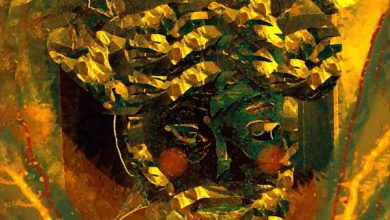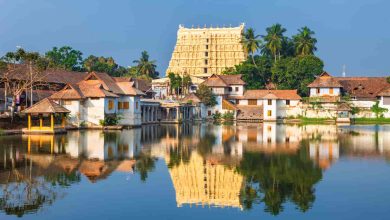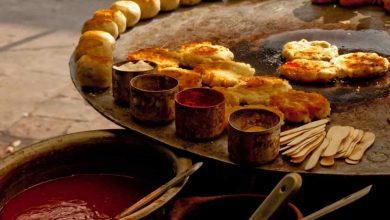Padmanabhaswamy Temple in Thiruvananthapuram, Kerala is one of the most visited temples in the country for numerous reasons. It is known for its architectural grandeur, the sort that will make you gasp in awe. The hallowed halls lead to the most mesmerising idol of Lord Vishnu while the tranquil courtyards will seem right out of heaven. Surprisingly, the temple’s origins are still shrouded in mystery to date! Did you know? It is not the only mystery associated with the temple. Some call the mysteries concocted tales while others believe it to be the supreme power of the Gods! Nevertheless, we must agree that the temple is a living testament to the legacy of culture, faith and heritage.
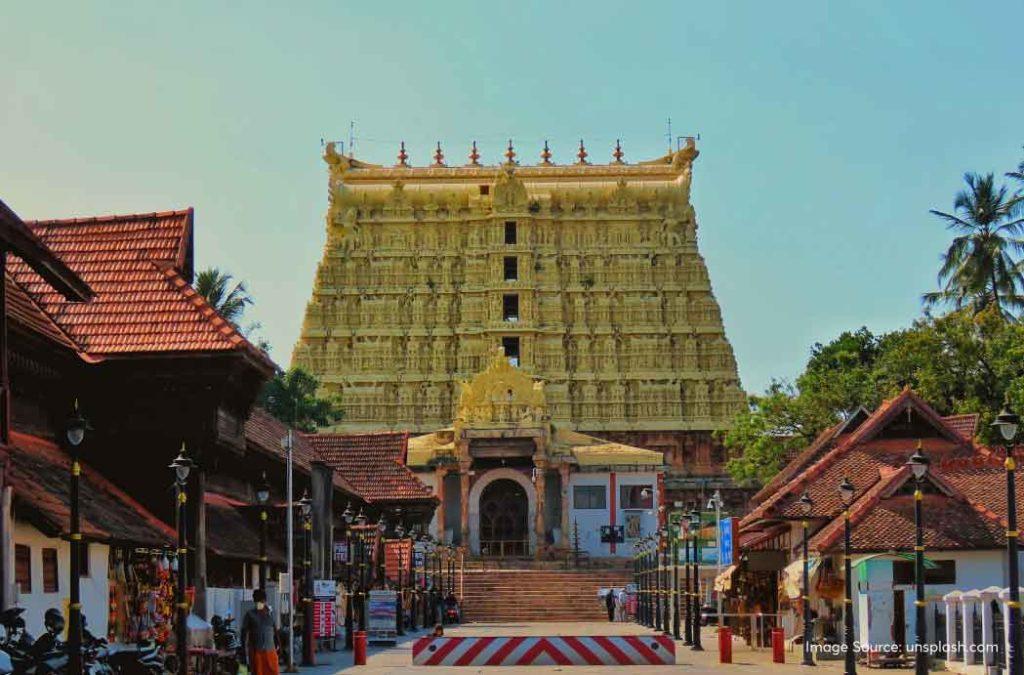
Here’s everything you need to know about Anantha Padmanabhaswamy Temple, its history, mysteries, spiritual significance and why it is called the richest temple in the world!
History of Anantha Padmanabhaswamy Temple
There are no reliable historical records that can tell us the exact time when this temple was built or consecrated. The place finds mention in many Hindu scriptures and Puranas like the Vishnu Purana, Brahma Purana, Skanda Purana, Varaha Purana and Bhagavata Purana among others. The only recorded evidence comes from the literature of the Sangam period, when the beautiful form of Lord Vishnu’s idol and the immense holy power of the temple were mentioned multiple times in the poems, hymns and stories from the time. Historians believe that the temple was once known as the ‘Golden Temple’ owing to the belief that the place holds immense treasures and a golden exterior.
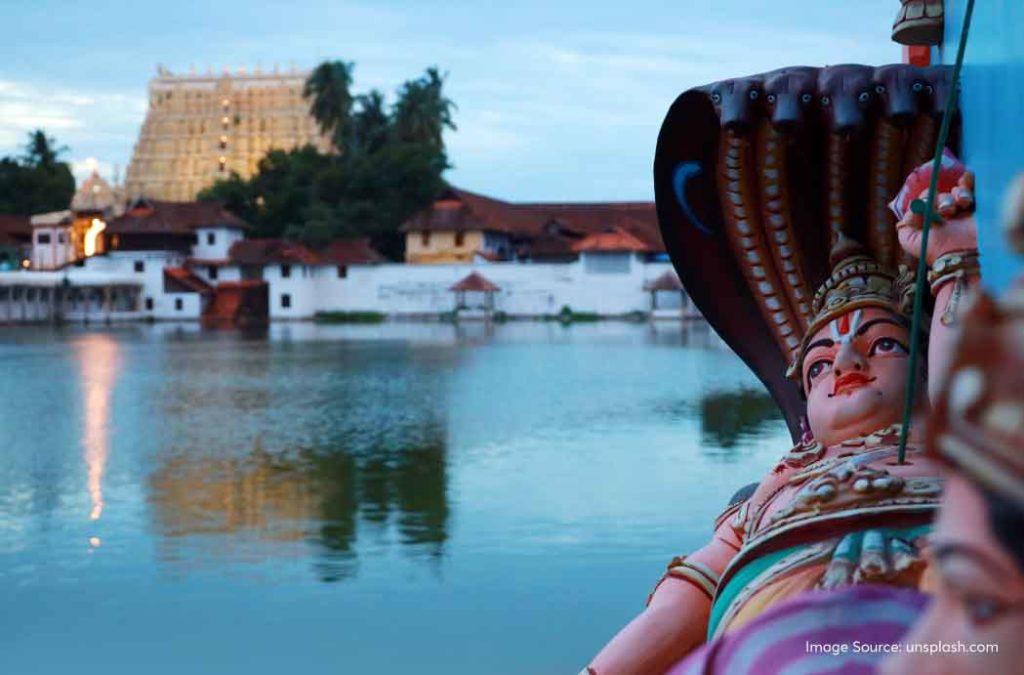
Nammalwar, a 9th-century poet, composed 10 hymns that praise the glory of Lord Padmanabha of Thiruvananthapuram. So, the temple must have been consecrated before that. Also, well-known Historian, Dr. L.A. Ravi Varma of Travancore, believes that the temple was built and consecrated on the first day of Kali Yuga, which is almost 5000 years ago (Bronze Age – 3100 BCE to 1100 BCE). Despite so many assumptions, no one can say for sure when this beautiful shrine was initially built.
The Popular Legend Of Anantha Padmanabhaswamy Temple
Divakara Muni was a Tulu Brahmin who was greatly devoted to Lord Vishnu. One day, he came across a young child who was so lovely that the sage couldn’t take his eyes off him. He asked the young one if he wanted to stay with him. The child agreed but with a condition. The sage has to be respectful to the boy and if he fails to do so, the young lad would disappear. Divakara Muni agreed to it.
The hermit cared for the boy immensely and also ignored the harmless pranks and mischiefs of the innocent child. But, that did not last for long. Divakara Muni was meditating before a ‘Saligram’ when the child came and put the Saligram in his mouth and began disturbing the sage. This greatly angered him and he ended up raising his voice and chastising the boy. As promised, the child disappeared but not before saying that the sage would find him again at ‘Ananthankaadu’.
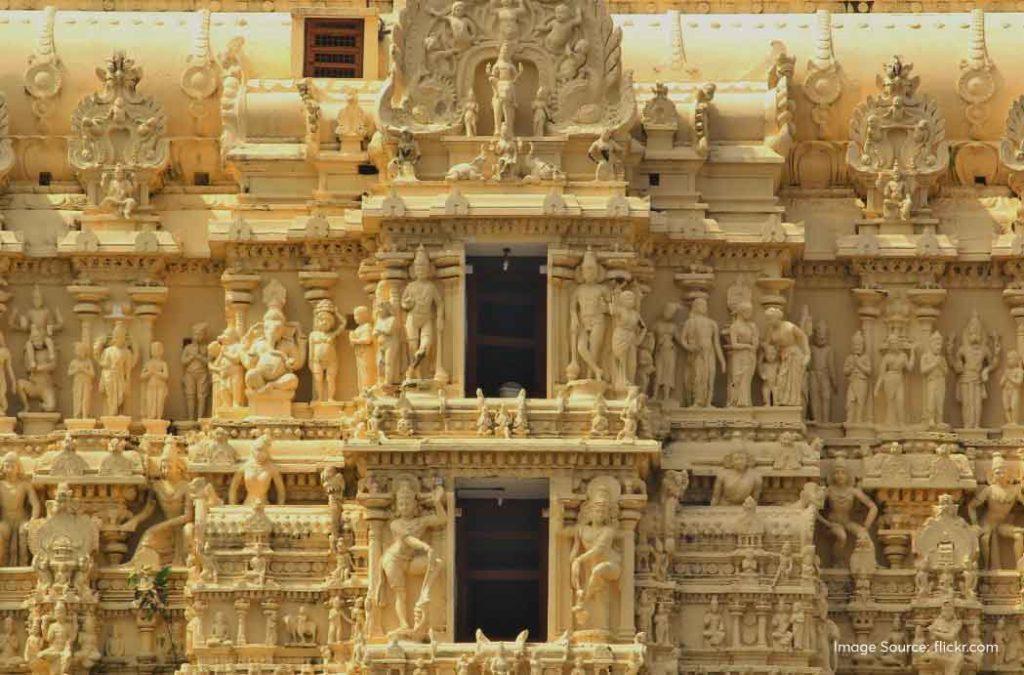
That is when Divakara Muni realised that the boy was none other than Lord Vishnu. He travelled to Ananthankaadu and found the little boy merging into a ‘ilappa’ tree. The tree fell and immediately assumed the form of Lord Vishnu, so huge that it was humanly difficult for the sage to witness the giant form. The Lord’s head was in Thiruvallam and his feet were in Trippapur, the east and north borders of Anantha Padmanabhaswamy Temple.
It is said that Divakara Muni consecrated the temple in the same place where Lord Vishnu gave him the divine ‘darshan’.
Significance in Hinduism
The Anantha Padmanabhaswamy is one of the 108 Divya Deshams or pilgrimage sites that are of paramount importance in Vaishnavism. The idol in this temple is very different from what you’d see of Lord Vishnu in any other shrine in the country. The God rests on a coiled snake with five heads – ‘Anantha’ and is in a state of rest, also called the ‘cosmic sleep’. Also, this temple is associated with the ‘Matsya’ form of Lord Vishnu or the ‘Fish’ shape. It is said that he instructed his disciple, Vilvamangalathu Swamiyar, in the sage’s dream to consecrate the temple. He appeared in his ‘Matsya’ form in the dream. This is another legend that is popularly associated with the Ananta Padmanabhaswamy Temple.
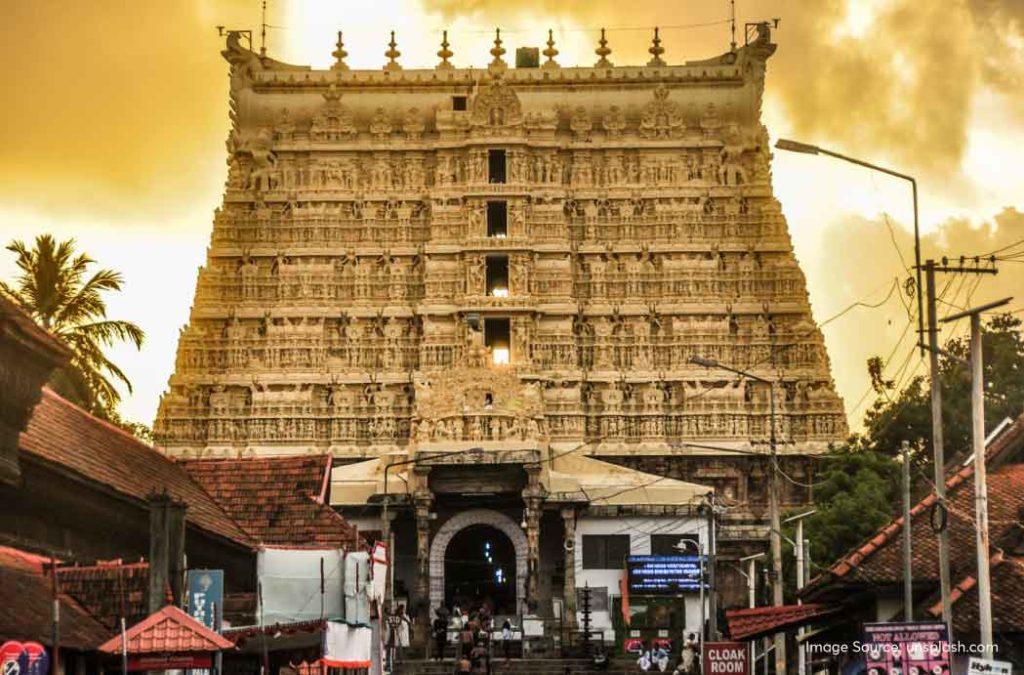
The city gets its name from this temple. Thiruvananthapuram translates to ‘Thiru’ meaning ‘Holy; ‘Anantha’ the sacred snake Anantha or Adi Sesha; Puram ‘city’. The name means ‘the city where Adi Sesha resides’.
The Architectural Splendour of Padmanabhaswamy Temple
The Padmanabhaswamy Temple is built in a blend of the south-Indian Dravidian architectural style and Kerala’s Chera architecture layout usually has temples in octagonal, rectangular, triangular or star-shaped. This is done while keeping the environmental conditions in Thiruvananthapuram in mind, especially the speed and direction of the wind flow.
The temple has several pillared halls where various rituals, ceremonies and celebrations are held during the festivals. The gopuram or gateway tower is in an impressive gold colour and has carvings of Gods, Goddesses and other celestial beings. It is decorated with bright lights at night. The temple also has a performance hall called ‘Koothambalam’ where artists perform traditional dances and sing the hymns of the Lord during festivals and ceremonies. The hall has beautiful wooden carvings and a ceiling adorned with elaborate paintings of Lord Vishnu.
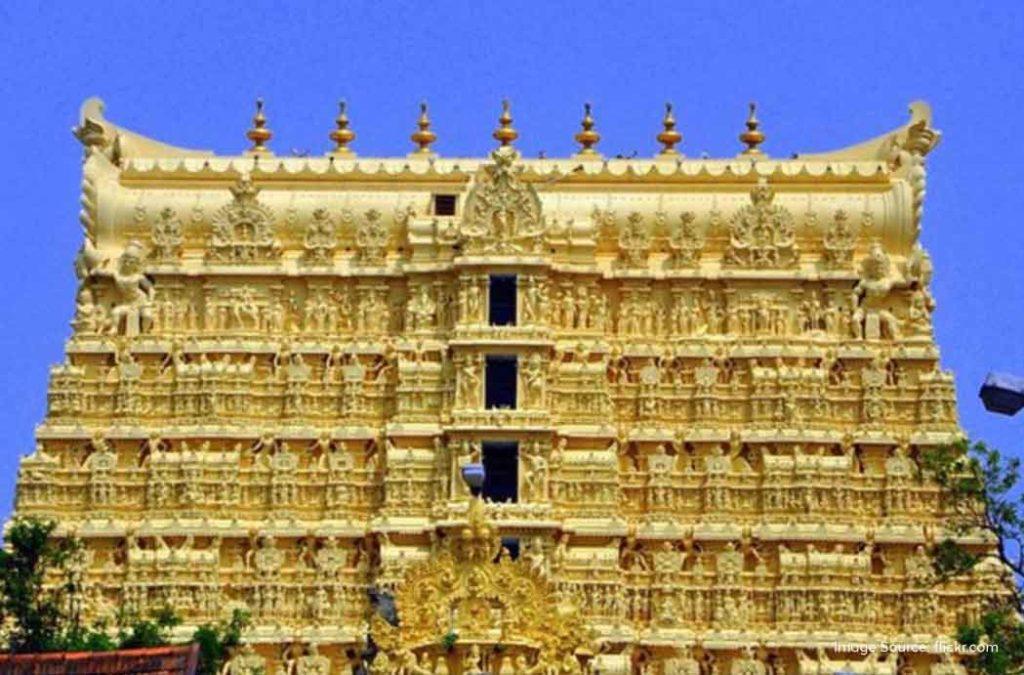
The temple is surrounded by sacred courtyards having lush greenery. Padma Theertham is a water body where devotees perform cleansing rituals and purification ceremonies.
In the Garbhagriha or Sreekovil lies Lord Padmanabhaswamy’s idol in his Anantha Shayana form. The deity rests on a five-hooded or five-headed snake called ‘Ananta’. The snake’s hoods are facing inward, as if in contemplation. While the Lord lies down, his right-hand rests on a Shiva Linga. His consorts, Goddess Lakshmi and Goddess Bhudevi are beside him. Lord Brahma emerging from a lotus, lies in the navel region of Lord Vishnu. This idol is made from 12,008 saligramams that were brought from the banks of River Gandaki in Nepal. The entire deity is covered with ‘Katusarkara yogam’, an ayurvedic mixture made from 108 ingredients from different parts of the country. This helps in keeping the idol clean.
For prayers and Abhishekams, other smaller idols of the deities are used. These are placed next to the main idol, Anantha Shayana.
Mysteries of the Temple
There are six vaults in the Anantha Padmanabhaswamy Temple. In 2011, the Supreme Court of India appointed a team to open these vaults and see what lies behind the closed doors. They named the vaults in alphabetical order – A, B, C, D, E and F. Except for vault B, all others were opened and it was found that a treasure worth 100000 crores was buried 5 feet below the ground. This included gold, gems and valuable artefacts. Some people urged that vault B should also be opened but staunch believers were strictly against the idea.
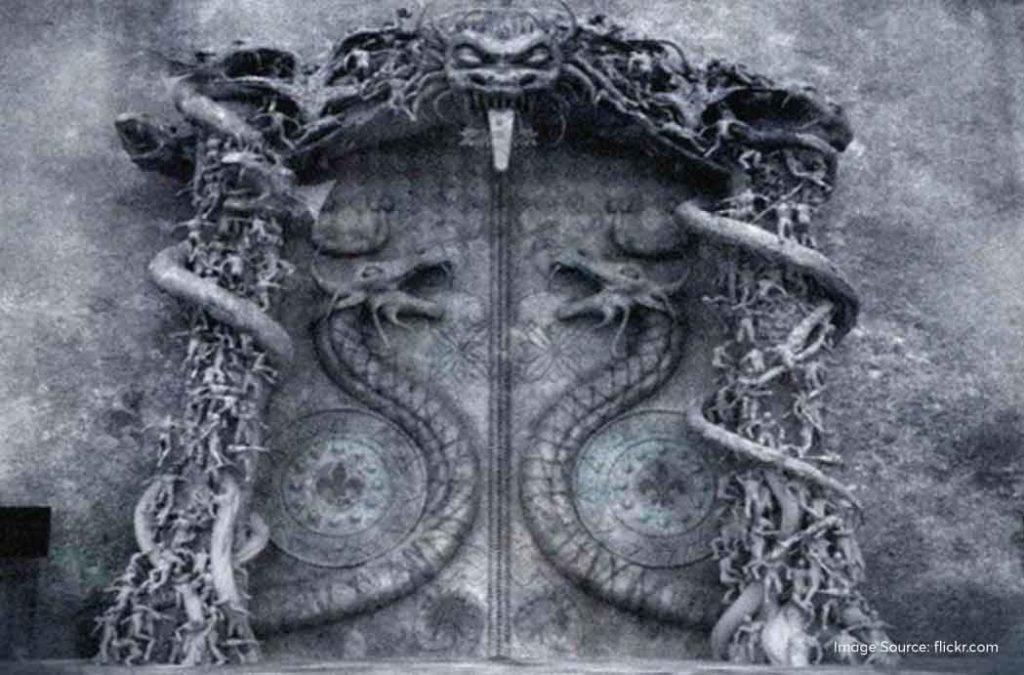
It is said that the treasure in vault B belongs to Lord Vishnu and Adi Sesha or Anantha himself guards these doors. There are no metal locks here but carvings of two large snakes are seen on the entrance. People say that there is another gold chamber within these doors that opens to the biggest treasure mankind can ever witness, probably worth trillions. According to Hindu Puranas, anyone who opens these doors will be cursed and this will invite a great deal of misery, natural calamities and bad luck to humans. Also, the snakes won’t hesitate to attack the ones who plan to open the doors without the Lord’s permission.
The entrance is sealed with the ‘Naaga Paasam’ and only the high priests who can chant the ‘Garuda Mantra’ can open the vault. No living priest can do this at the moment. Devotees believe that the supernatural elements protecting the door should not be played with and thus, the Supreme Court also decided not to investigate further.
However, some people say that these doors were opened in the 70’s and also twice in 2002. No one really knows the truth.
The Legendary Wealth
The Royal Family of Travancore are the current administrative caretakers of Anantha Padmanabhaswamy Temple. Their ancestor, Marthanda Varma, dedicated his entire kingdom to Lord Padmanabha in 1750. It is an established custom that anyone born into the Travancore family line will serve as a holy servant to Lord Padmanabhaswamy. That wealth found in the vaults is estimated to be the offerings of devotees over the years and donations made by Royal patrons.
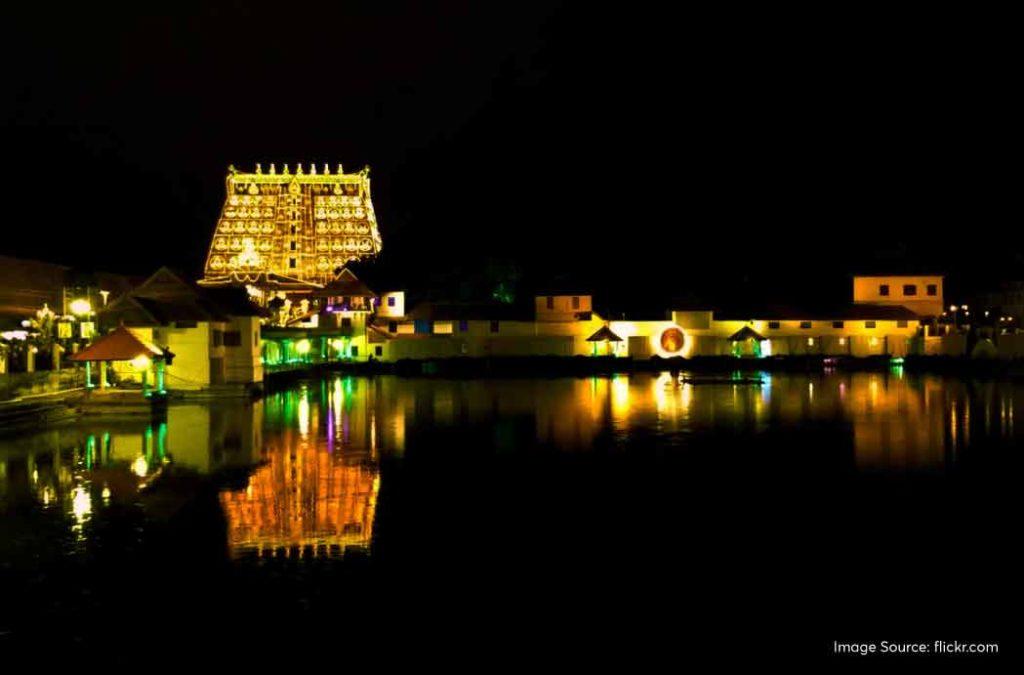
Some priceless artefacts and gems could be acquisitions during wars, conquests, trade and even diplomatic exchanges between different nations. When the Travancore royal family dedicated themselves to the Lord’s service, they also gave away their wealth as ‘Devaswom’ or the ultimate dedication to God. The wealth is already worth billions of dollars without seeing what lies behind vault B. This makes Padmanabhaswamy Temple one of the richest shrines in the whole world.
India is also home to several other richest temples with awe-inspiring architecture and interesting historical tales. You must explore them whenever you find time.
Temple Rituals and Festivals
Two main rituals happen at the Padmanabhaswamy Temples every year.
Painkuni Utsav
The Painkuni festival is celebrated in March/April. During the celebrations, five glass figurines of the Pandavas will be placed on the eastern entrance of the temple. This is done so to please the Rain God, Indra. The festivities begin after hosting the ceremonial flag, Kodiyettu by the royal family members of Travancore. The ten-day celebrations involve prayers, processions and feasts. On the ninth day, the head of the royal family will enter the forest area near Vettakorumakan Temple for the royal hunt, Palli Vetta. On the tenth day, the idols of Lord Vishnu along with his consorts will be taken to the Shanghumugham Beach for a spiritual immersion and this marks the end of the festival.
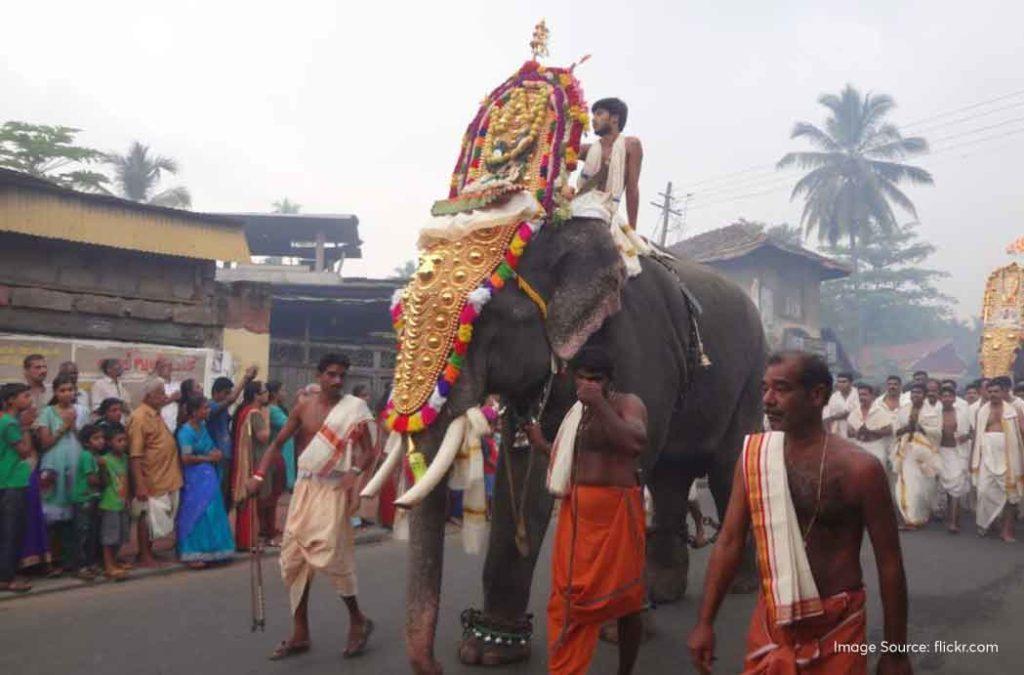
Alpashi Utsav
The Alpashi festival happens in October/November every year. The idols will be taken from the temple to Shanghumugham Beach for a holy bath. This procession will start from the temple entrance, led by the head of the Travancore royal family. He would have a sword in hand and several beautifully decked elephants with mounted police and armed forces marching in synchrony and flocks of devotees also join the journey from the temple to the beach. This is a mesmerising visual and people from across the world arrive in Thiruvananthapuram to witness it.
If you are planning to visit Thiruvananthapuram on the dates that coincide with these festivals, we suggest that you book your hotels in Thiruvananthapuram in advance. Owing to a large influx of pilgrims, it will be a daunting task to find accommodation near the temple.
Pilgrimage and Devotion
Devotees from all parts of India seek blessings at the Anantha Padmanabhaswamy Temple in Thiruvananthapuram for good health, prosperity, success and familial harmony. Some pilgrims have been worshipping Lord Padmanabha for several generations and are loyal believers of Lord Vishnu’s powers. People also undertake arduous journeys, travelling very long distances barefoot to offer homage to Padmanabhaswamy.
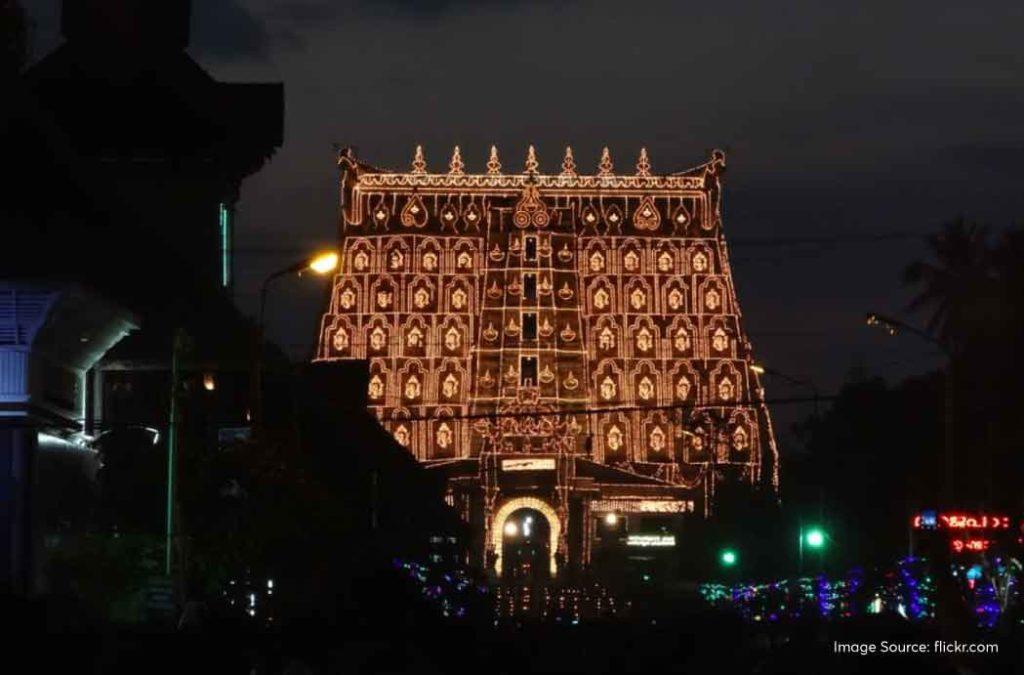
The age-old mystery and legendary wealth are two more reasons why tourists come to the temple very often. The architectural grandeur is the cherry on the top. Anyone can visit the temple and there are no restrictions to worshipping. However, it is important to keep in mind to dress modestly covering hands and legs.
Scholars and historians often visit the shrine to research the surroundings and record their findings for future reference. There is so much to uncover, many mysteries to unveil and these learned men are always seeking answers from the walls of the temple.
Padmanabhaswamy Temple is a major pilgrimage site and also the most sought-after tourist place in Kerala. It receives a significant number of visitors every year and the figure only doubles during festive occasions like Ekadashi, Navratri and Diwali. When you visit the place, you will see why people are drawn to it. The sense of spiritual fulfilment and serenity is unparalleled. You should definitely experience the magic!
